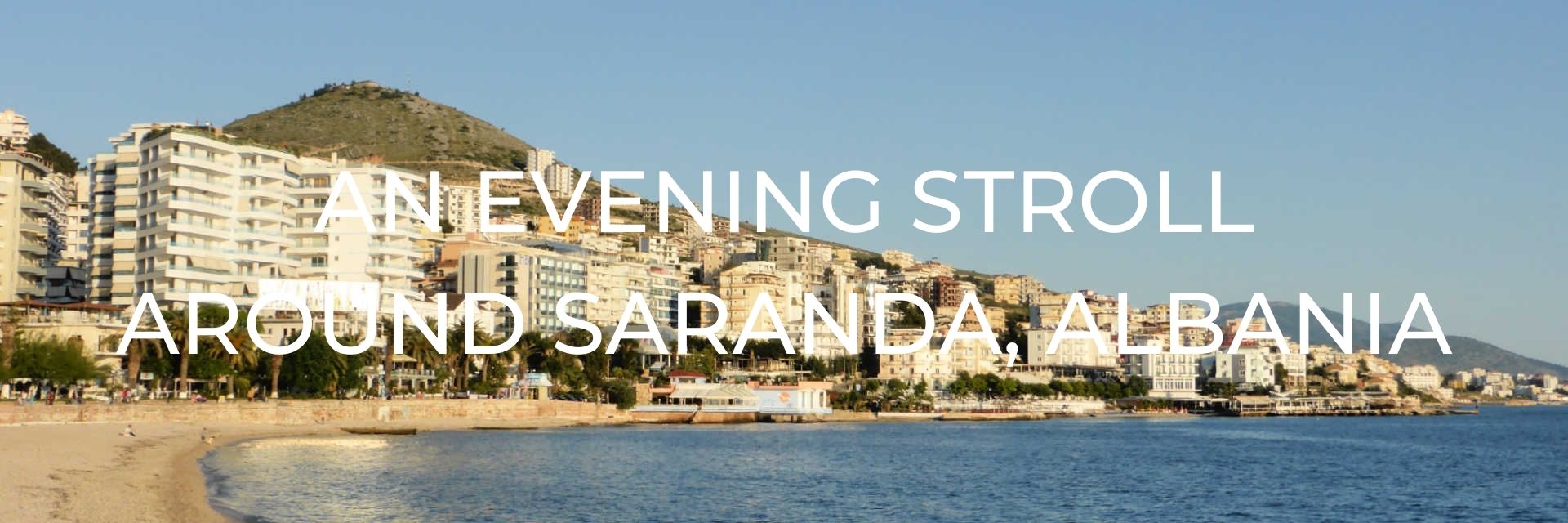
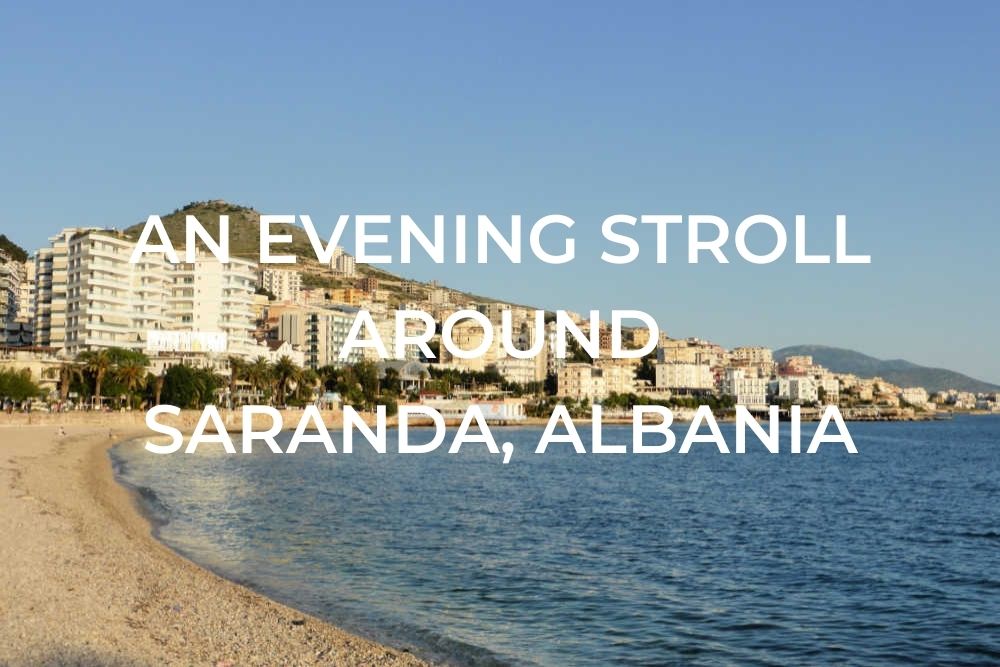
Called one of the sunniest places in Europe with its Mediterranean climate and 270+ days of sunshine a year, Saranda is a great spot to stay if you’re looking for something a little more urban and close to some of the best sights in Albania- like the Blue Eye and Butrint. This is where we would be based for two nights during our journey around Albania.
Saranda is located in a horseshoe-shaped bay which makes for some great beaches right there in the city. It’s also really close (only 10 km/6 miles) from Corfu in Greece so there is lots of Greek influence on the culture, in addition to its own Albanian culture. There are regular ferries between Corfu and Saranda and we had hoped we could catch one to take the kiddo to Corfu, if even for an hour because he SO wants to visit Greece. Unfortunately for us we just didn’t have enough time to do it. That’s OK though, one day he’ll get to Greece.
After our wonderful drive along the coast for the day, we arrived in Saranda in the late afternoon to get checked in and then take a little stroll around the city before dinner with our guide leading the way and teaching us a little about the history and culture of the area.
Saranda’s history can be traced back about 2500 years and one of the neatest sites we saw on our walk was the ruins of an old synagogue believed to date back to the 5th century B.C. It is smack dab in the middle of modern buildings and it’s fortunate that it has been preserved as much as it has instead of completely ruined as they built up the city.
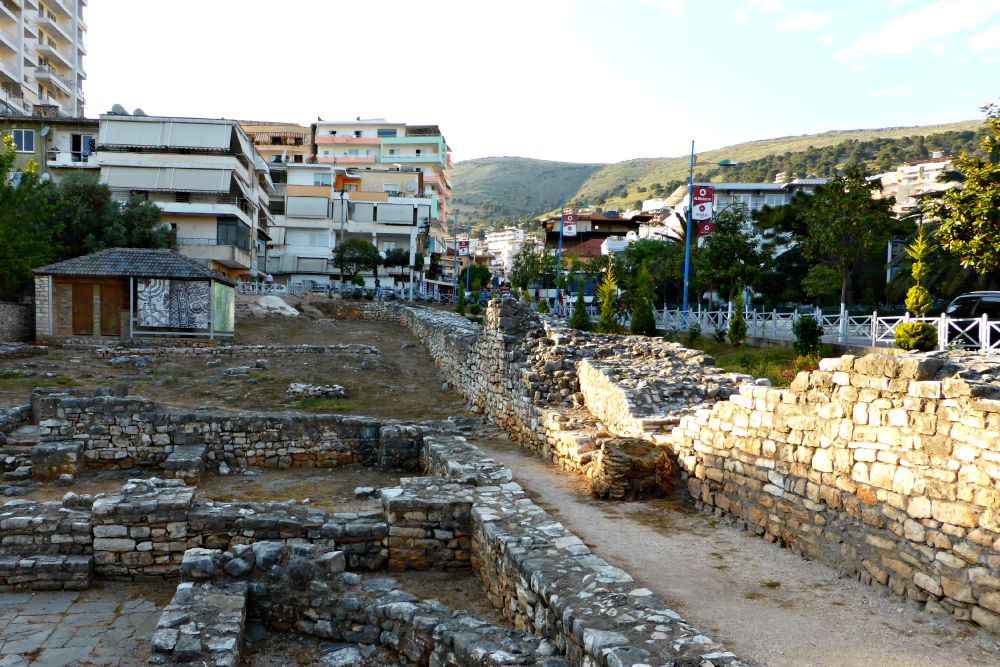
This post may contain affiliate links. Please read our full disclosure policy here.
One of the reasons Saranda is so developed is that it was one of the few places offered to tourists during the communist regime, not only for Albanian travellers but also for the few foreign tourists that were allowed to enter the country. Because of those years, there were many investments in the “Riviera Green Crown” which was the transformation of the highlands in that area with the cultivation of olives, oranges, and lemons on hillside terraces.
Unfortunately, not much of this remains now, especially the lemons and oranges as they didn’t thrive as the olives have. Nowadays the city is doing well with the population growing as many families from different parts of the country have moved here permanently. There are also many accommodation options for the increasing number of visitors each year.
For me, on this particular evening, my favourite parts of the stroll were just seeing the people who lived there going about their business like they do every day. There were people tending to their food markets, many selling little trinkets and souvenirs along the waterfront, and then others just out for their evening xhiro, the tradition of Albanians to come out to parade in the evening which is part mating ritual, part catwalk, and part social event. The idea is to walk endlessly up and down the street, or along the boardwalk until you get bored or bump into somebody you know and go off and do something else. I guess really we were part of this particular evening’s xhiro. That’s pretty neat.
Here are a few of my favourite photos from the rest of our stroll…
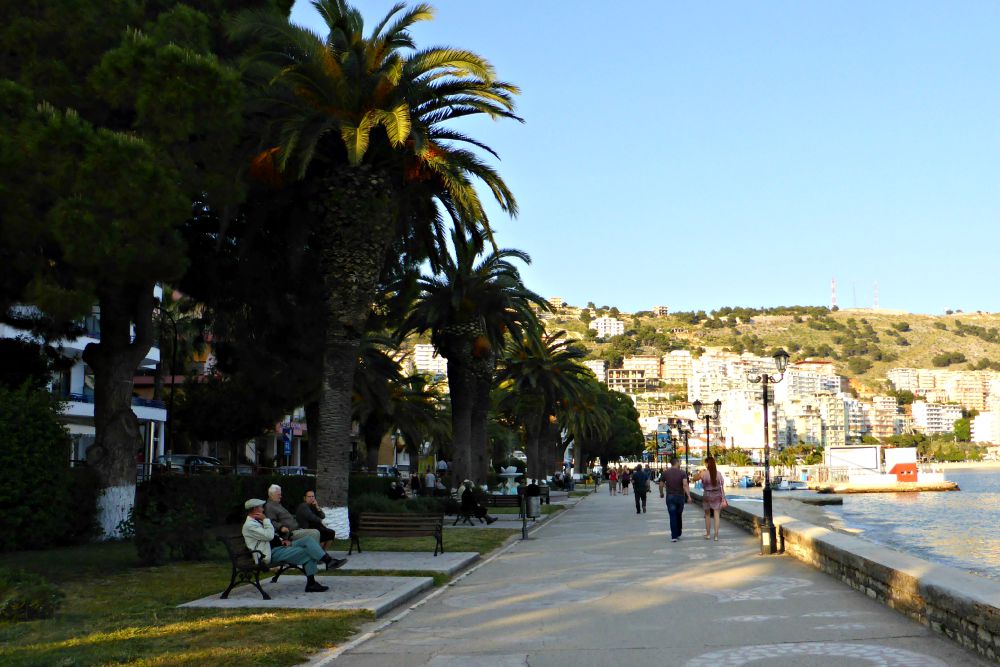
Out on the town to see and be seen
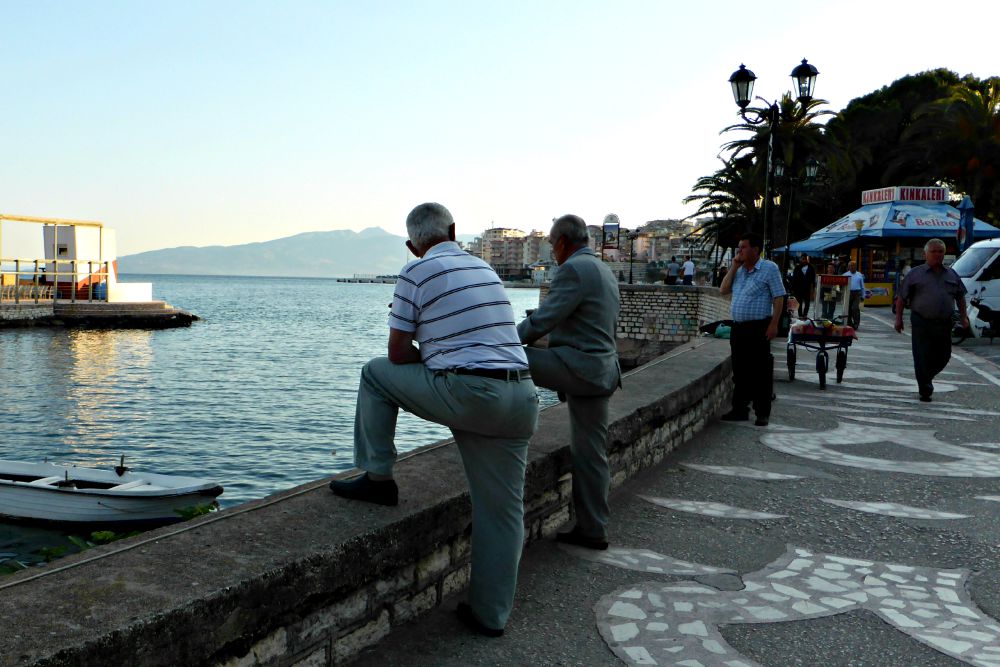
Can almost hear these two guys now as they chat during their evening xhiro…
“Nice day we today wasn’t it?”… “Sure was. Supposed to be much the same tomorrow which will likely bring more tourists, like that one behind us that thinks we don’t know she is taking our photo”…
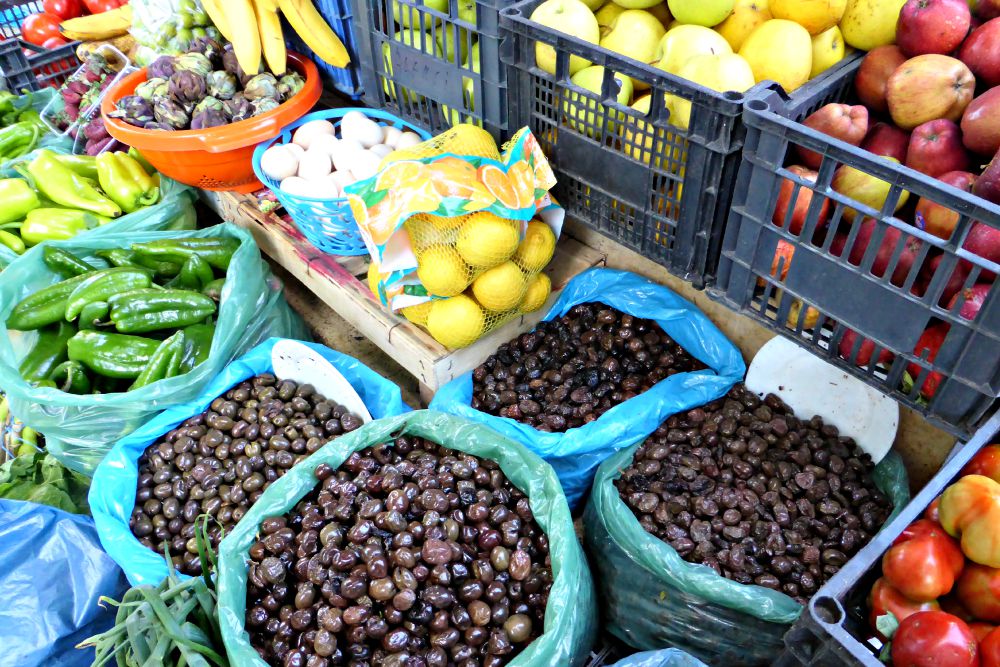
Not surprisingly olives are a common sight in the market.
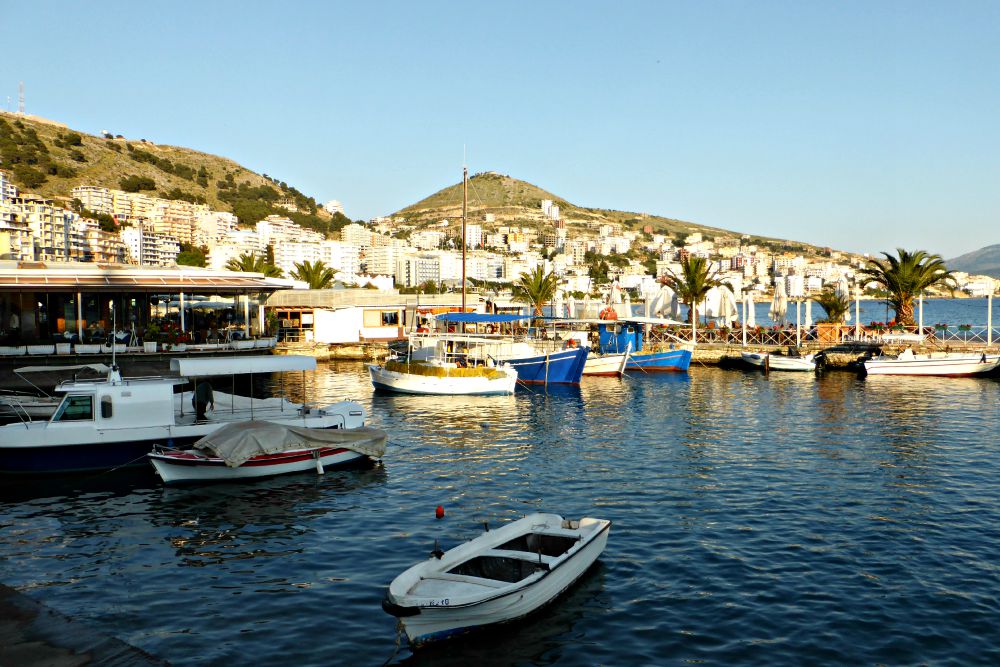
After watching the sun as it started to set on Saranda it was time to head back to the hotel to get ready for dinner. We’d heard seafood was on the menu for the evening and the kiddo and I could not wait for that. It was delicious!
RESOURCES | PLAN YOUR TRIP TO ALBANIA
Some of the links in the post above are affiliate links. This means if you click on the link and purchase the item, we will receive an affiliate commission but this does not affect the price to you. Please read our full disclosure policy here.
